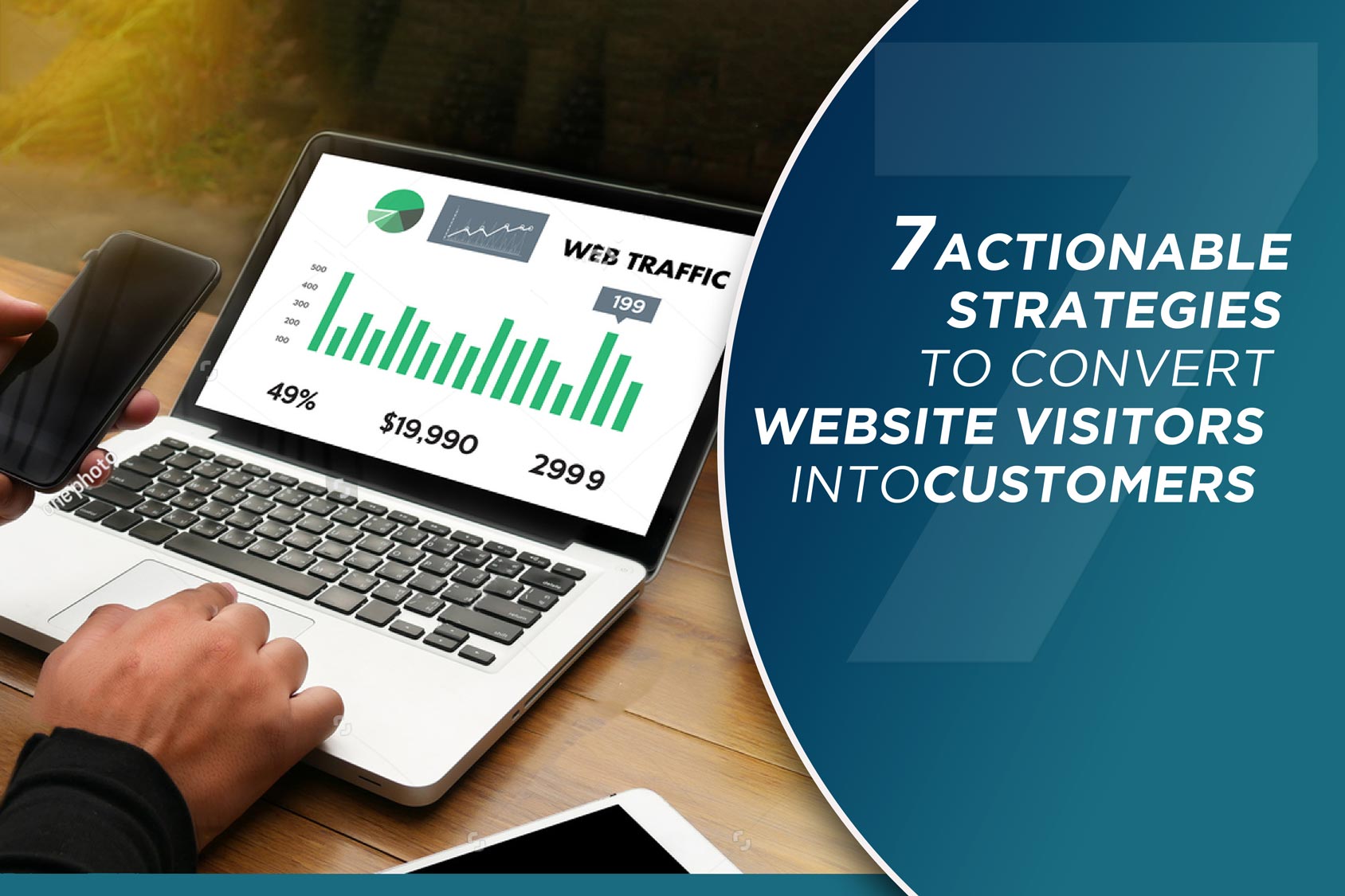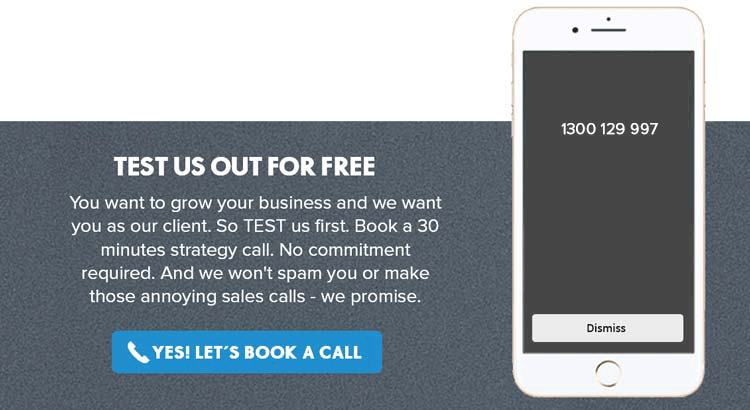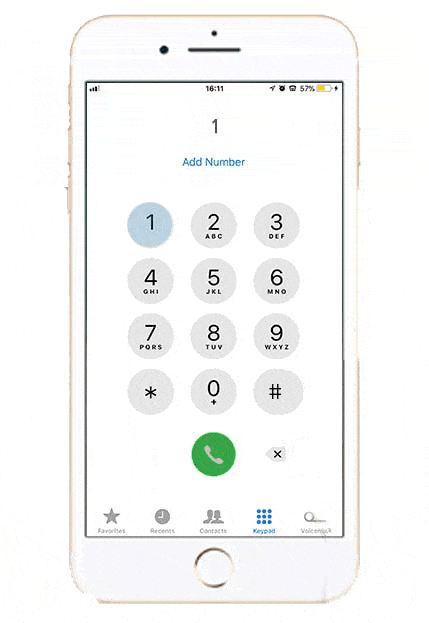Before you read this article on how to convert website visitors into customers, ask yourself the following questions:
- Have you spent enough on Google Ads like many other businesses have done?
- What about running Facebook Ads? Have you done that too?

- Are you getting a reasonable amount of traffic to your website but it isn’t making you as much money as it could?
- All that money spent on marketing but still not getting the expected ROI?
If any of these applies to your situation then know that you are not alone. It’s a common issue faced by many online businesses. Having said that, it is a critical state for your business. The reason is that you are exhausting your budget to get the leads and if you don’t start getting the revenue you need, your business may not last that long, harsh reality, right?
Let us start with the good news – you’ve already cracked the hard part. You’re getting visitors. Well done on that. Your marketing strategies are working. The next thing you need to crack is conversion rates.
In this article, we’re going to look at a number of different ways to convert website visitors into customers – so you can start making more money from the visitors you are already getting on your site. Objective of this article is not to poke you with some high-level overview and let you guess the rest. Rather, you will get a detailed explanation with examples so that you can act on these straight away.
Please Note that in order to keep this article to a reasonable size, we needed to draw the line somewhere. We urge you to definitely do your own research after going through this article. We added some great links to ease your research hurdles.
WHAT IS A CONVERSION RATE?
Your conversion rate is simply the percentage of visitors your site manages to convert into paying customers or some other actions that you would like them to take. You’ll normally be looking to convert to a sale, but this can also refer to other actions such as
- opting-in to an email list,
- signing up for an offer, or
- clicking through to an affiliate.
You can probably tell by now, the higher the conversion rate, the better
– as that should mean you’re making more money.
The example below shows how increasing your website conversion rate by a small 2% increases your revenue by 1.5X
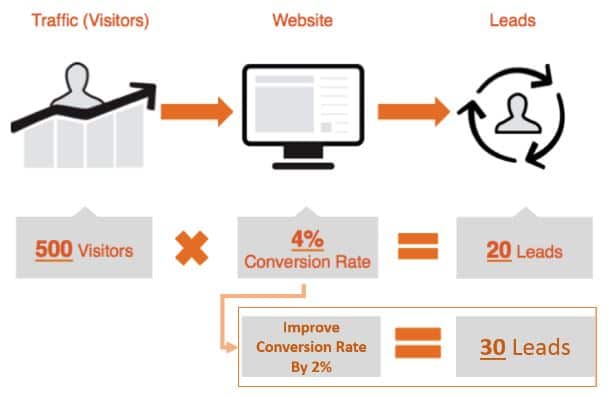
Don’t expect conversion rates to be too high. A good rate for a successful web-business could be around 4-6%. It might not seem like much, but if you get thousands of visitors each week and can convert just 3% of them, you should be onto a winner.


1. KEEP THE “CALL TO ACTION” CLEAR AND ABOVE THE FOLD
If you’ve got a clear call to action – you’re already be putting yourself ahead of a lot of the competitions. Far too many websites bury their calls to action or leave them in places that aren’t clear. The more distractions there are, the less likely someone is going to act with your call to action.
While additional adverts are easily a nice extra revenue stream for your business – don’t overload visitors with too many distractions!
One little tip you could use is a sticky sidebar widget with your call to action or opt-in page on it. This keeps your offer clear and on-screen no matter how far down your site someone scrolls.
Here are some cool examples of good calls to actions that you can’t help but click:
- Dropbox: Sign up for free. Very clear message with a good colour scheme. Everything here is just complementing each other nicely

- Netflix: Join for free. See how they have mentioned that you can cancel anytime. This takes out the worry of a new member from overspending or getting into an unwanted commitment.
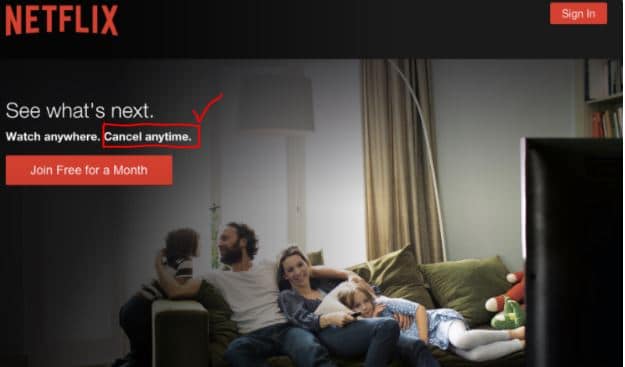
Let’s look at a couple of bad call to action examples…
X Sliders with no button: We have seen these many times, haven’t we? You visit a website, you see a big slider but there is nothing to click on that slider to know more about. It’s the best example of how to misuse a website’s prime real estate. Here is a good example of this issue. You will notice, there is no option to click on the offer. How on earth are you going to get more information on the offer?

X You would really need to work hard to find the button to add the product to the cart in the example below. The product here looks appealing but it is not backed up by a good call to action.
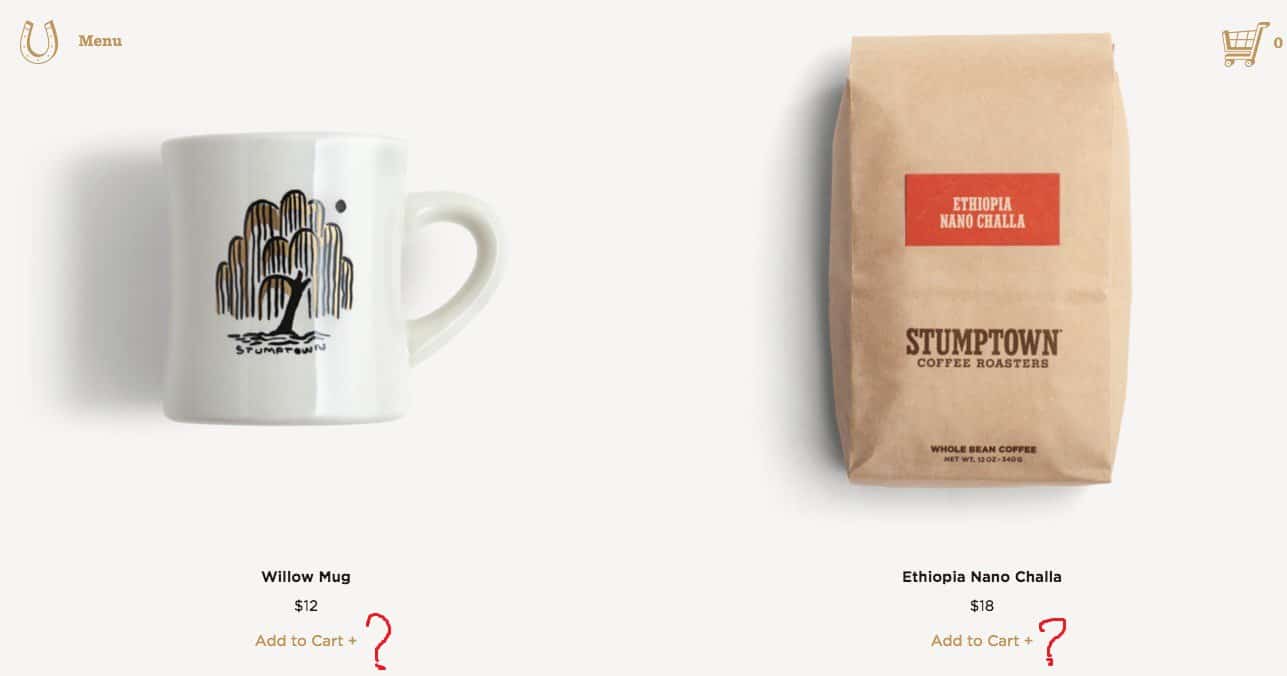
2. TREAT VISITORS WITH RESPECT, OFFER THEM VALUE
Some businesses would do anything including spamming people relentlessly or trick them into doing business with them. In the past, this tactic might have worked (only for short term though). But that isn’t how a successful business is built these days. Consumers have learnt from their past bad experience. The competition is cut-throat these days. So, the only way to ensure a successful business by building up a good reputation. To build up a sustainable business and a brand, you need to offer people value (like through this article we are trying to do) and treat them with respect. When someone is trusting you with their email address, you need to respect them by providing only relevant contents.
High-quality content says a lot about the true intention of a site – and it could get your visitors to do some of the marketing legwork for you as they “share” your content with their friends on social media. You can’t do that with worthless content.
pick a few good (relevant) offers – don’t simply treat them as cash cows to be milked.
You can check out some good examples in this nice article by Optinmonster here.
3. TARGET THE RIGHT VISITORS
Conversion rates aren’t just improved by what’s on your site – they also depend on the sort of traffic you’re getting. It goes without saying that certain segments of traffic are more likely to convert than others.
Paid Ads:
While paid ads or spots on mailing lists might seem like a good way to get relevant clicks – are they the sort of traffic that converts enough to make them worth it? The answer could very well be yes but you really need to run a few tests and do the calculations. Without data, you will always be wondering between what’s working and what’s not.
To give you an example, you could send
Be careful with keywords:
Another thing to look at is to search for the right visitors for your business. What keywords are people using to find your business on a search engine? This could really make or break your AdWords campaigns. Some keywords bring a more “active” visitors group who are more likely to spend money – so those are the sort of keywords you want to target.
People looking for a product + “discount” normally know they need to spend money. As a consequence they just want to see if they can make a saving. These are the keyword additions you want to include in your strategy. On the other hand, those looking for “free” are normally looking for a free ride and are highly unlikely to convert – be careful to concentrate on them.
Here are some keywords that can help you drive the “right” traffic. The reasons that will trigger the possibility of these keywords working for you could be different. So note the reasons next to the keywords and make sure you use the ones relevant to you.
You:
Be personal and make your products and services about the visitors. Gone are the days when you would visit a website and find the businesses are talking about “when they were formed, how many employees they have”. Who gives a damn about those? Aim for a simple demand-supply based service approach. If your business is new but can provide them with what they want then they would rather come to you instead of going to someone who’s there since ice age but can’t provide the correct solution yet.
Click:
An action that is not always in the minds of visitors. If you enforce it by mentioning it, they will more likely to click the link you want them to click. It sounds weird but it surely works.
Increase:
A must use for all businesses on their website. No matter whether you are selling a product or providing a service, everyone needs an increase in their revenue.
Try:
If you are offering a subscription-based product/service and have a free trial period then use this keyword to grab attention and ease the first transaction barrier.
Opportunity:
Chances are high that your business is providing an opportunity to the target audience that not many other businesses are. Highlight that fact and make visitors feel that they can’t let this opportunity pass them by.
Ends:
This the urgency in your offer. Put a deadline. This will make the visitors feel like they need to act ‘right now’. Putting a clock/counter, which is counting down is a common method used in this space to hit home the urgency.
Easiest:
People are always in a hurry. They need the assurance that what they are going to buy would make their life easy. They don’t want to invest too much of their valuable time on to figuring out a product or service. So give them the assurance that it would be easy for them. Provide them clear instructions (if applicable) or better even if you include videos telling them how it works.
Find:
Works big time if someone is looking for a solution to a problem. If you are giving a solution then ‘find’ is what will give you more traction among your visitors.
Grow:
Businesses, no matter how small or big, want to grow. Use this word to tap onto that emotion.
Love:
Works well since it touches one of the strongest human emotions. Your customers should feel that they are not having your products only because they need it rather they love it.
Exclusive:
Everyone loves to own something that is exclusive. Explore this angle if it is applicable to your business.
4. OFFER INCENTIVES AND MAKE THEM TIME-SENSITIVE
People need to know that they should be acting NOW – rather than clicking out with the intention of maybe coming back. The greater the click out, fewer the conversion. Offer people special, time-sensitive discounts to make them sign up right away. Spend time to research and understand what would be an irresistible offer for your target leads and make sure you put it out to them.
Take a look at this example below. Variation B would obviously convert more – you can appreciate it straight away.

5. MAKE SURE YOUR LAYOUT IS WORKING FOR YOU
There are loads of unique and striking design ideas and layouts that can be suitable for your web page. The reality is – you need to test to make sure you’re using the most conversion-friendly layout possible.
Note: you should not be looking for the best-looking design. Focus on directing your message to your visitors clearly and innovatively. Remember, your website visitors are time-poor. They are eager to get the information they are after the quickest possible way. Make sure you give it to them right away.
DOWNLOAD THIS BLOG IN PDF
6. USE CUSTOM LANDING PAGES FOR DIFFERENT SORTS OF TRAFFIC
First of all – what is a landing page?
A landing page is a web page, which serves as the entry point for a website or a particular section of a website.
So, you have done all the hard work of writing a beautiful copy for your Google AdWords campaigns. You have spent ages on your email template and its content. You have done so well to grab the attention of your potential customers. And you are driving all these traffic to your homepage where everyone is getting the same experience!
I am sure, while you are reading the above scenario, you already have identified the issue with that. If you are not doing these then hats off to you because most businesses are doing exactly these.
We already looked at how different types of traffic could have different implications for your business, from paid ads to organic search traffic. Make sure you have customised landing pages for each type of visitor, one that’s designed specifically for them and/or the campaign you are running. You could even have different keywords to enter into your site through different landing pages so that those who are looking for a discount get sent straight to that offer and those looking for particular content end up in the right place.
Below is a great example of a clear and to the point landing page example. It’s simple with a great design. See how potential questions are answered in the page as well.
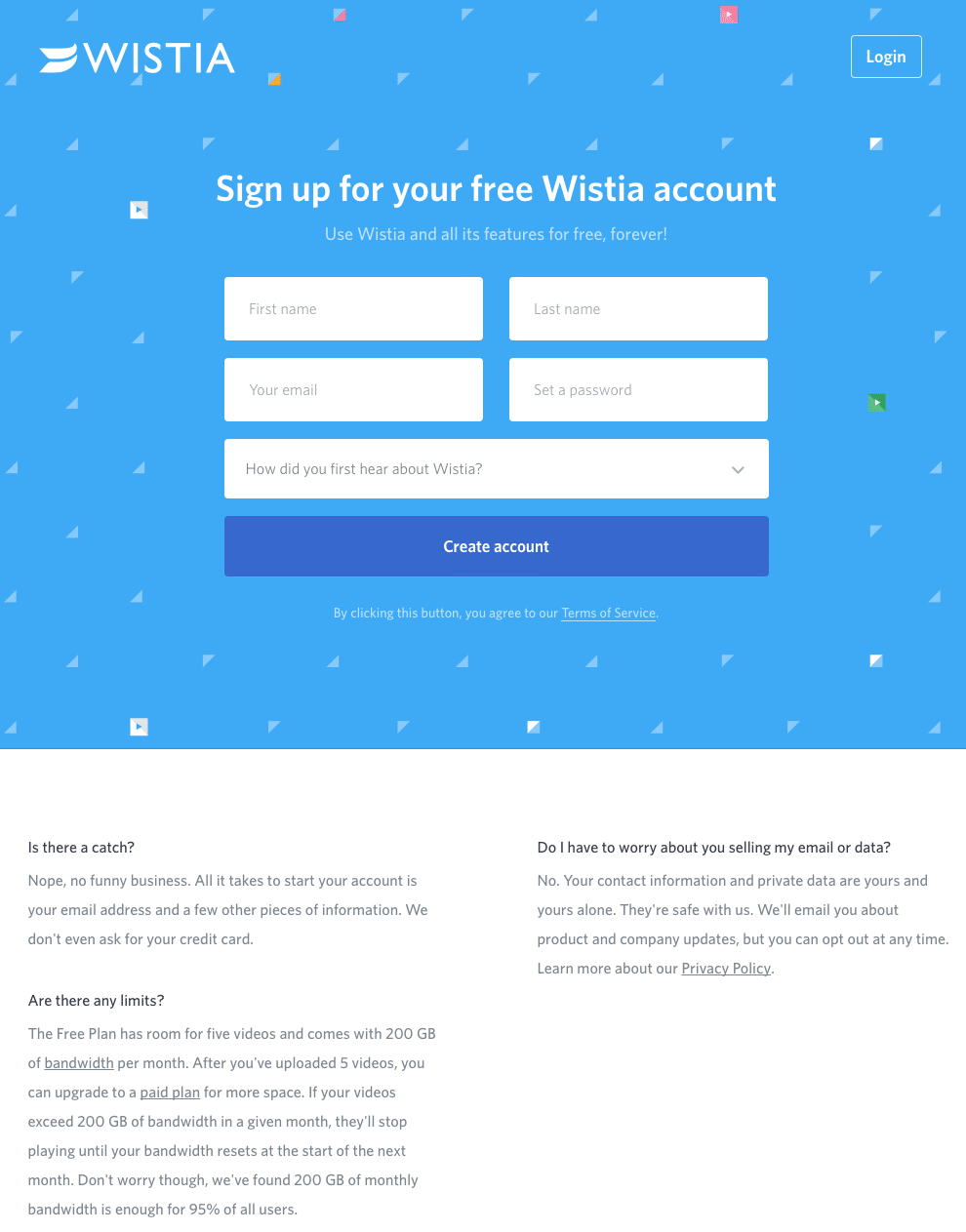
7. TEST, LEARN, DO MORE TESTS AND IMPLEMENT
The only way to really know which layouts are working for you and which landing pages convert the most with different segment of traffic – is through testing. You need to run repeated A/B tests to genuinely get the data to identify exactly what works best for both your visitors and your conversion rates. You might think you know the answer, but you won’t know for sure until you’ve tested it significant times.
The other vital thing to remember is that the learning you have must be implemented as well. Too many times business owners implement a lot of testing but they fail to put the learning into practice.
Never ignore the small little learnings. It is always better to tweak things slightly anyway so that you are aware of what’s working and what’s not and be very/exceptionally specific.
Here are few essential tools you should look at:
- Google Analytics – it’s a no-brainer. It’s free and gives you a ton of insights that are usually super easy to act on.
- If you are not technical and not sure how to build effective landing pages then you can use the following tool:
- Test your website page speed with Pingdom Tool
- Check whether your website is mobile responsive using Google
These tips, if implemented, surely going to be enough to convert more traffic and making more for your business.
